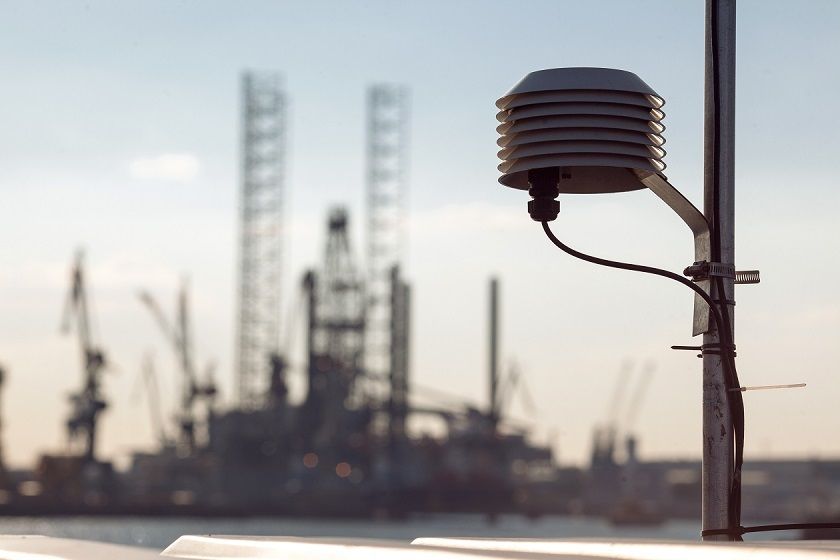
Together with all the stakeholders in the We-nose project of the Port of Rotterdam we are continuously working on new developments to improve air quality monitoring in the port of Rotterdam area.
Please read the translated article (original was published by the Port of Rotterdam – dutch only) about the current project developments below.
Original article published by: Port of Rotterdam Authority
Publishing date: 24-09-2019
Article link
Noses for better air quality in the port
The port of Rotterdam is the largest in Europe, but the ambition is not the size of the port: we want to be the smartest port in the world. And this means innovating in all possible areas. This also applies to air quality and safety. Currently, around 20 companies in the port are working together with the DCMR Environmental Protection Agency Rijnmond and the Port of Rotterdam Authority to detect sudden changes in the air of the port of Rotterdam through the we-nose network. This means that action can be taken quickly and in a targeted manner if necessary.
We-nose
In recent years, the Port of Rotterdam Authority has installed more than 250 electronic noses – e-noses – in the port. The e-noses monitor the composition of the air via sensors that detect changes. They then send this information wirelessly to a central monitoring server. This central network is a service offered by the Port Authority that companies and government departments can use. The pivot of special cooperation is that all parties have access to the information of the system. The information from the e-noses is simultaneously shown live on screens in the control room of the DCMR and in the control rooms of companies. Hence the name of this network: we-nose.
In case of emergency
The purpose of the network is twofold: companies can recognize and remedy unwanted emissions at an early stage on a daily basis, preventing odor nuisance, for example. In the event of an emergency where hazardous substances are released, the network can also be used to support security services. In addition to the 250 we noses, a number of companies have installed their own noses on their site. These company noses are often adjusted even more precisely so that the companies have a continuous view of the air composition on their own site. The information of the company noses is in fact visible on a screen in their control room. In an emergency, they can share the data of their company noses with the authorities. “The men and women of the fire brigade, police and other security services are committed every day to protect us in the event of disasters in the port,” says Janhein van den Eijnden, managing director of Vopak Rotterdam and one of the participating companies. “I would like to contribute to supporting them wherever possible. In addition, we naturally want to know immediately if there is a change in air quality in our working environment ”.
A good neighbor
Working with hazardous substances is a daily routine for Vopak. The company specializes in the storage and handling of liquid chemicals and gas and oil products. Van den Eijnden: “Many people work and live on top of each other in the port area and surroundings. This makes safety and environmental management extra important, but also a major challenge. We must tackle this challenge together. We always try to innovate: innovations such as e-noses are naturally part of that. ”At Vopak they use two different types of digital systems. The first is a real-time overview and the e-noses provide the input for this. The second is an intelligent system that makes predictions based on the weather and planned work. Based on the information they receive from this, they can make operational decisions.
Vopak was the early-adopter with the use of e-noses in our port area. “With the e-nose, you quickly notice any odor spread and you can prevent potential nuisance, and therefore potential complaints. You want that as a company, don’t you, “says van den Eijnden.
Smart together
A number of times a year the parties sit down together; the participating companies, the DCMR, Rotterdam-Rijnmond Safety Region, Port of Rotterdam Authority and Comon Invent, the network manager. During these discussions the user experiences and the future vision are discussed. Everyone can indicate here how the network and collaboration are experienced and how they see the future of the we-nose network. Simon Bootsma, director of Comon Invent, announced the latest developments at the last meeting. Comon Invent, the DCMR and companies are currently testing the possibility of automatic source recognition. The intention is that in the future the system itself can “think”, recognize situations and propose targeted actions.
Simon said: “The system learns while it is being used. Every case makes the system a little smarter. For example, it can quickly recognize the patterns of degassing ships and the appropriate parties can be quickly informed of the situation via the control room of the DCMR. ”With this special collaboration, all parties are working on a smart and safe port.
